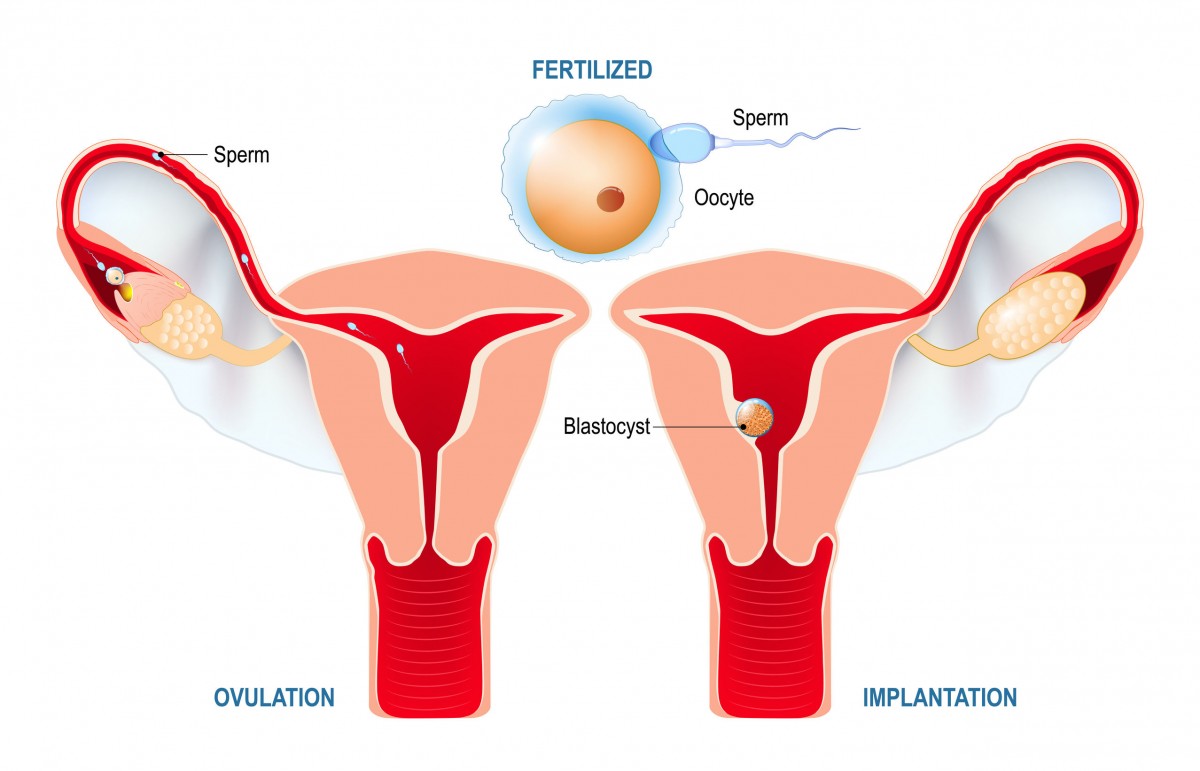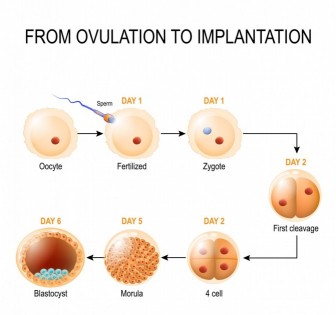Once an egg is fertilized, it takes about a week to travel down the fallopian tube while it turns into a blastocyst. After it reaches the uterus, the blastocyst embeds in the thickened endometrial lining of the uterus (you know, the prep work that results in your monthly period when you do not have a fertilized egg to implant). It can cause some cramping and light implantation bleeding when implantation occurs, though not always enough for you to notice. Once the blastocyst is in your uterus, it will begin dividing into two groups, half of which will become your baby, and the other half will develop into the placenta.
This marks the beginning of the embryonic period, and by week 9, your embryo will become a fetus. Right now, the embryo is the size of a poppy seed, and all of the organs and body parts will start to develop. This time period is when your embryo is the most vulnerable, making this a critical time for taking care of yourself to help ensure a healthy pregnancy. At the 12-week mark, almost all of the organs have been formed, which is why the occurrence of miscarriage greatly reduces after these critical 12 weeks. During this time, the embryo will elongate and start to look somewhat human-shaped. Other important features like the neural tube (early spinal cord) and the major blood vessels begin to form.
For a humorous and informative blow-by-blow of fertilization, implantation, and embryo development check out this Crash Course Video of what will happen inside you.
A primitive placenta (yolk sac) is also forming right now, with cells tunneling into your uterus to create space for blood flow so that the mature placenta can provide its required nutrients from you to your little one. The sac produces your baby's red blood cells and nourishes your baby until the placenta has developed. The amniotic sack, where your little one will be hanging out, is also present, and the amniotic fluid will cushion the baby as they grow.
Reference Sources
- Merck Manual - Development of an Embryo
- American Pregnancy Association - Concerns Regarding Early Fetal Development
- Mayo Clinic - Fetal Development 1st Trimester
- Crash Course - Reproductive System Part 4


